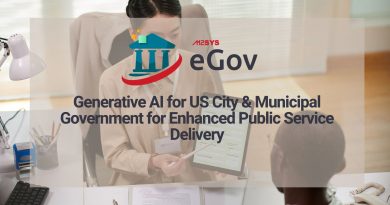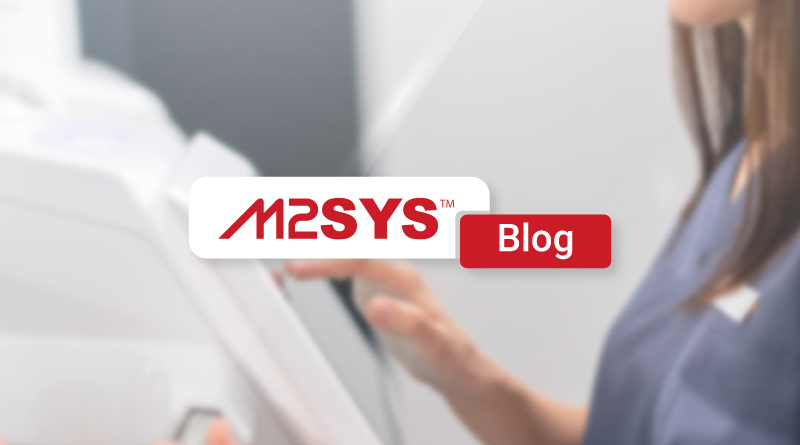Enhancing Government Services Efficiency with AI Assistants for Data-Driven Decision Making
Government agencies handle vast data daily, yet only a fraction becomes useful insights. AI assistants transform this by providing actionable details, enhancing decision-making and efficiency. These tools predict demand, streamline operations, and integrate with existing systems, fostering proactive governance and improved public service delivery.
TL;DR
- Government agencies handle vast data daily, but AI assistants help turn this into actionable insights, improving decision-making and service delivery.
- AI tools predict demand, allowing for proactive resource allocation, reducing response times by up to 30% in pilot programs.
- Seamless integration with existing systems enhances efficiency, boosting productivity by 25% in some municipalities.
- AI-driven analytics dashboards enable data-driven decisions, streamlining workflows and improving public safety.
- Real-world examples, like Singapore's Smart Nation, demonstrate significant administrative improvements through AI.
- AI assistants are crucial for future governance, enhancing efficiency and foresight in public services.
Transform your agency's operations with AI-powered solutions. Contact M2SYS to explore how AI can enhance your government services.
Government agencies worldwide handle over 2.5 quintillion bytes of data daily, yet only a fraction turns into useful insights. This massive data flow often leaves officials buried under information without clear paths forward. However, AI assistants for government services now step in to change that picture. These tools sift through the noise and deliver sharp, actionable details that drive better choices. As cities grow and citizen demands rise, such assistants become key players in making public operations smoother and more responsive.
What Role Do AI Assistants Play in Government Services?
AI assistants for government services act as smart helpers that process vast amounts of citizen data. They spot patterns in service requests, like spikes in permit applications during certain seasons. For instance, a city might see more building permits in spring, and an AI tool can flag this early. Therefore, agencies allocate staff and resources ahead of time, avoiding delays. Moreover, these assistants ensure data stays secure while meeting strict compliance rules, so governments maintain trust with the public.
How Can AI Assistants Predict Demand in Public Services?
Predicting demand stands out as a major strength of AI assistants for government services. Machine learning digs into historical data to predict demand during busy periods. Take urban planning: if data shows rising traffic complaints in a neighborhood, the AI suggests targeted improvements like new bus routes. Consequently, cities respond faster to needs, cutting wait times for citizens. A 2023 study from the World Economic Forum noted that predictive tools reduced response times by 30% in pilot programs across European municipalities. This shift from reactive to proactive handling marks a big win for efficiency.
Why Integrate AI Assistants with Existing Government Systems?
Integration matters because many agencies still rely on older systems. AI assistants for government services connect smoothly to these setups, allowing data to flow without hitches. For example, linking to property record databases helps track trends in housing demands. As a result, officials gain real-time views that inform decisions on zoning or development. Plus, this approach minimizes training needs, so teams adapt quickly. In the US, trends show that seamless tech adoption has boosted municipal productivity by 25%, according to recent reports from the National League of Cities.
What Benefits Do AI Assistants Bring to Decision Making in Government?
Data-driven decisions form the core of modern governance, and AI assistants for government services make this possible through clear analytics dashboards. Officials view trends at a glance, such as rising public safety calls in certain areas. Therefore, they can redirect patrols or add lighting where needed. Furthermore, these tools highlight inefficiencies, like bottlenecks in licensing processes, leading to streamlined workflows. Historical examples, like New York City’s use of data analytics post-2010, demonstrate how such strategies cut crime rates by 15% through better resource placement.
Addressing Common Challenges with AI in Government Services
Governments often struggle with data overload, where too much information slows down operations. AI assistants for government services tackle this by turning raw data into focused insights. They also solve resource allocation issues by predicting needs accurately, which reduces waste. For instance, during peak seasons for civic enforcement, like festival times, the AI recommends extra inspectors. Consequently, agencies operate leaner and serve citizens better. Market trends indicate that by 2025, over 60% of US municipalities will adopt AI for these purposes, per Gartner research, to build more resilient services.
A Practical Solution for Municipalities
With over 20 years of experience working with governments globally and in the US, M2SYS has seen firsthand how data challenges hinder service delivery. That’s why the M2SYS City & Municipality Management Solution powered by M2SYS eGov platform stands out. This platform builds and delivers eGovernance solutions that embed AI assistants to analyze service request trends, predict demand peaks, and suggest resource shifts for areas like public safety and urban planning. For example, in a mid-sized US city facing permit backlogs, the platform’s AI tools identified seasonal patterns and optimized staff schedules, slashing processing times by 40%. Meanwhile, it integrates easily with existing systems, ensuring secure data handling that meets compliance standards. As a result, agencies move toward proactive governance, anticipating citizen needs and fostering smarter city growth without overwhelming their teams.
Real-World Examples of AI Assistants in Action
Consider Singapore’s Smart Nation initiative, where AI-driven tools have streamlined public services since 2014, reducing administrative burdens by 20%. Similarly, in the US, cities like Los Angeles use data analytics to manage traffic and emergency responses more effectively. These cases show how AI assistants for government services create lasting improvements. By focusing on predictive insights rather than just daily tasks, governments build stronger, more adaptive systems that handle future challenges.
The Future of Efficient Government Services
As data volumes keep growing, AI assistants for government services will play an even bigger role in shaping responsive governance. They empower officials to make choices that directly improve citizen lives, from faster inspections to better-managed property records. Ultimately, this leads to communities that thrive on efficiency and foresight. If your agency faces similar hurdles, exploring such platforms could mark the next step in enhancing operations.
What are AI assistants for government services?
AI assistants for government services are tools that utilize artificial intelligence to process vast amounts of citizen data, enabling more efficient and responsive public services. To learn more about how these tools enhance service delivery, visit our AI assistants for government services page.
How do AI assistants make public operations smoother?
By analyzing data and predicting demand, AI assistants help streamline public operations through efficient resource allocation and proactive planning. For more insights on this topic, check out our article on public operations smoother.
What benefits do AI assistants bring to decision-making in government?
AI assistants enhance decision-making by providing data-driven insights, allowing officials to make informed choices that improve public services. Discover how these insights facilitate better governance in our post on data-driven decisions.
Why is seamless tech adoption important in municipal governance?
Seamless tech adoption in municipal governance ensures smooth integration with existing systems, minimizing disruptions in operations and boosting productivity. Read more about this process in our article on seamless tech adoption.










